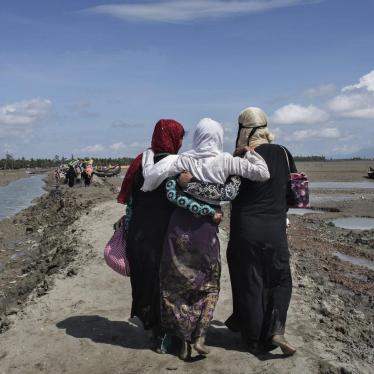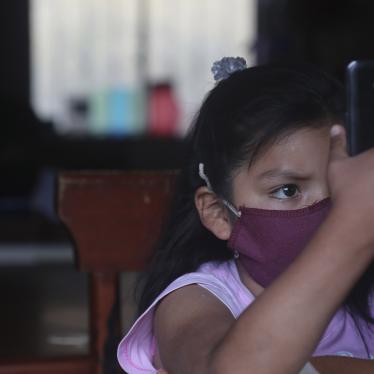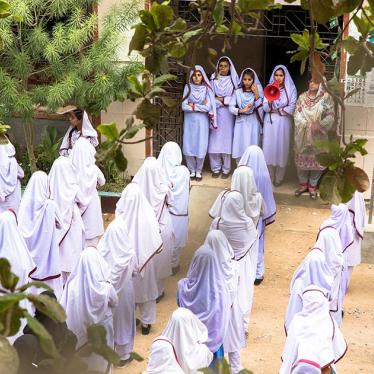(New York) – The Chinese government has ended a key policy of allowing Tibetan monasteries to be run by monks who comply with government regulations and have instead introduced a system that will place almost every monastery in Tibet under the direct rule of government officials who will be permanently stationed in each religious institution, Human Rights Watch said today.
On January 4, 2012, the Party Secretary of the Tibetan Autonomous Region (TAR), Chen Quanguo, announced that government or party officials will be stationed in almost all monasteries permanently, and that in some cases they will have the senior rank and pay of a deputy director of a provincial-level government department. The permanent posting of government or party officials inside monasteries is unprecedented in Tibet, let alone at such a senior level.
“Although the Chinese government has placed many restrictions on the practice of religion in Tibet, these new regulations represent an entirely new level of intervention by the state,” said Sophie Richardson, China director at Human Rights Watch. “This measure, coupled with the increasing presence of government workers within monasteries, will surely exacerbate tensions in the region.”
According to official documents, the new policy, known as the “Complete Long-term Management Mechanism for Tibetan Buddhist Monasteries,” is described as, “critical for taking the initiative in the struggle against separatism,” and aims to “ensure that monks and nuns do not take part in activities of splitting up the motherland and disturbing social order.”
The order to post resident cadres within monasteries in the TAR was contained in an “important memorandum” on “mechanisms to build long-term stability in Tibet” issued by Politburo Standing Committee Member Jia Qinglin, Minister of Public Security Meng Jianzhu and other state leaders in late December 2011. That memorandum orders the TAR to “have cadres stationed in the main monasteries to further strengthen and innovate monastery management,” according to an official news report on December 20.
“This new decision is a major departure. It overturns the central guarantee of ‘autonomy’ that has guided policy on Tibet for decades,” said Richardson.
China’s policy for Tibetan monasteries, first introduced in 1962, provides that all monasteries are supposed to be run by monks – under close governmental supervision, but with only indirect involvement of officials. The policy was abandoned during the Cultural Revolution (from 1966 to 1979 in Tibet), when almost all monasteries were closed and many were physically destroyed.
The policy allowing nominal self-rule of monasteries was reinstated in the early 1980s and had been upheld ever since. China’s constitution guarantees freedom of religious belief, but control over religious activities of ethnic minority groups such as Tibetans and Uighurs has always been markedly more severe.
Under the previous policy, all places of worship, including Tibetan monasteries, have until now been administered by a structure called the “Democratic Management Committee.” Although the nomination and selection of the committee members are controlled by government and party officials (and rigid political constraints are imposed on the nominees), the committees were comprised of monks who had at least been elected by their own community.
The new system now requires an unelected “Management Committee” – also referred to as zhusi danwei/gongzuozu (“monastic government work-unit”)– to be established in every monastery, with up to 30 lay officials stationed in each monastery, depending on the size of the institution, according to a February 15, 2012 article in the government-run Global Times. The new “Management Committees” will run the monasteries and will have authority over the previous “Democratic Management Committees,” which will now be responsible for rituals and other matters.
The new arrangement is referred to as “the combination of management by administration with self-rule” in monasteries and means that “officials are selected and sent to manage the monastery together with the monks.” In monasteries that are at “grassroots level,” the administration will be in the hands of officials from the local village-level organizations of the government or party.
The new system of cadre-supervised monasteries is the result of a research project initiated in 2008 by the United Front Work Department, the agency of the CCP in charge of religion and nationality issues. The research was initiated as an “emergency response project” by a team of experts in Beijing following widespread unrest in Tibetan areas in 2008, according to an August 26, 2011 article by Gong Xuezeng, a professor at China’s Central Party School.
In November 2011, the authorities began establishing the “Management Committees” in the 1,787 monasteries that are allowed to operate in the TAR. The stated objectives of the new management scheme are:
- “to promote lasting political stability in the TAR and other Tibetan areas,”
- to “establish harmonious monasteries,” and
- to ensure that “monks and nuns have the freedom to perform their religious rituals.”
However, according to Gong’s article, the temples will have to “rectify their religious style,” though the meaning of this is unclear.
The rationale for the new system is explained in official documents as “enhancing social management” in temples. This is seen as developing an underlying objective established in 1994 which aimed to “adapt Tibetan Buddhism to socialism.” The new theory argues that since monks are members of society as well as monks, their institutions should be run by social forces, meaning party and government organizations. As a result, in the new system, besides the party cadres stationed within monasteries, numerous local government offices at each level will have day-to-day responsibility for directly managing different aspects of Tibetan monastic life. Twenty-four government organs, including the offices of public security, foreign affairs, and justice, are listed in regulations issued in Aba (Ngaba in Tibetan) prefecture in 2009 as involved in managing local monasteries (article 4).
Under the new system, according to Gong’s article, these government offices are also required to provide practical services, such as running water, electricity, roads, and social security payments, to monks and monasteries, “especially those that are supportive and helpful for patriotism.”
In eastern Tibetan areas outside the TAR, reports indicate that instead of establishing a new committee, the old Democratic Management Committees will be retained as the leading body in each monastery, but are expected to have a government official inserted as the deputy director of each committee. For example, regulations have been passed in Qinghai, which place each township-level monastery in that province under a “Masses Supervision and Appraisal Committee” that will supervise, monitor, and report to the government on the management and religious practices in local monasteries.
Two leading monasteries in the TAR, Tashilhunpo (Zhashilunbuin Chinese) in Shigatse (Xigaze in Chinese) and Champaling (Qiangbaling in Chinese) in Chamdo (Changdu in Chinese), will be allowed to retain their Democratic Management Committees without creating a committee of unelected officials above it because they have “have actively explored the path of self-education and self-rule, creating an effective management pattern with their own characteristics” and so have “achieved monastery self-rule and democratic management.” The two monasteries are considered politically reliable and are the traditional seats of two lamas, the Panchen Lama and Phagpa-lha Gelek Namgyal (a leading lama), who hold national-level office in China.
Human Rights Watch called the decision to impose direct rule on almost all monasteries and to station cadres permanently in them is a worrying indication that the state is becoming increasingly invasive in its management of religion in Tibet. These policies are likely to lead to further tensions and to further exacerbate social difficulties that have been growing in Tibetan areas since 2008. The move also appears to undermine statements by China’s Premier, Wen Jiabao, this week that “we should respect Tibetan compatriots’ freedom of religious belief” and that “we must treat all of our Tibetan compatriots with equality and respect.”
Strict security measures and restrictions on fundamental freedoms in Tibetan areas were imposed, following a series of street protests against Chinese rule in March 2008. Immediately following the protests, thousands of people were detained and arrested, though the total number is unknown, and at least two Tibetans were executed in October 2009 on charges stemming from their involvement in the protests. Security measures and restrictions on the exercise of religious freedom imposed on monasteries in Aba (Tibetan: Ngaba) and Ganzi (Tibetan: Kardze) Tibetan autonomous prefectures in Sichuan were especially severe, including intimidating raids and arbitrary detentions of monks, as detailed by Human Rights Watch.
Twenty-eight Tibetans have set themselves on fire since March 2011 to protest China’s policies, including at least 18 from Aba.
“If the Chinese government is committed to reducing tensions in Tibetan areas, it should repeal these policies immediately,” said Richardson.






